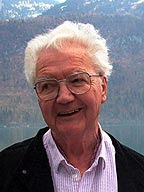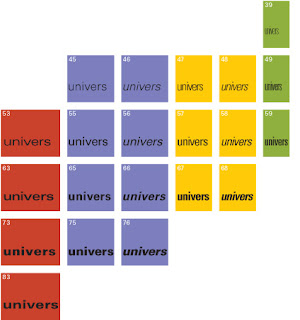
Adrian Frutiger (May 24, 1928–Present)

Frutiger is probably one of the well-known type designer of the 20th century. He designed fonts that are still widely used today; his most popular fonts are Frutiger and Univers.
Frutiger designed Univers in 1957. Univers is a sans-serif font. It was published at the same time as Folio and Helvetica. All three typefaces was recognized as the other, but what easily set Univers apart was the different weight and variations within its own family. Instead of naming the family members “Univers Condensed” or “Univers Extended,” Frutiger numbered them (though we still identify the family with names). He wanted a large family, perhaps that was reason behind the numberings.
Today, the Univers type family has 44 faces, with 16 different weights, width, and position combinations. 20 fonts are Italicized (oblique). Frutiger developed an interrelated typeface system that called “Univers grid.” A Univers grid show s how the family's is organized and named: how fat or thin they are (width/condensed/extended), their boldness (well, bold or not), and posture (regular or oblique).

Fun fact:
Univers is a big family, indeed, yet they all have the same size feet.
(I mean the “@” mark has a consistent width.)
http://en.wikipedia.org/wiki/Adrian_Frutiger
http://en.wikipedia.org/wiki/Univers
http://www.identifont.com/show?110
http://www.typotheque.com












